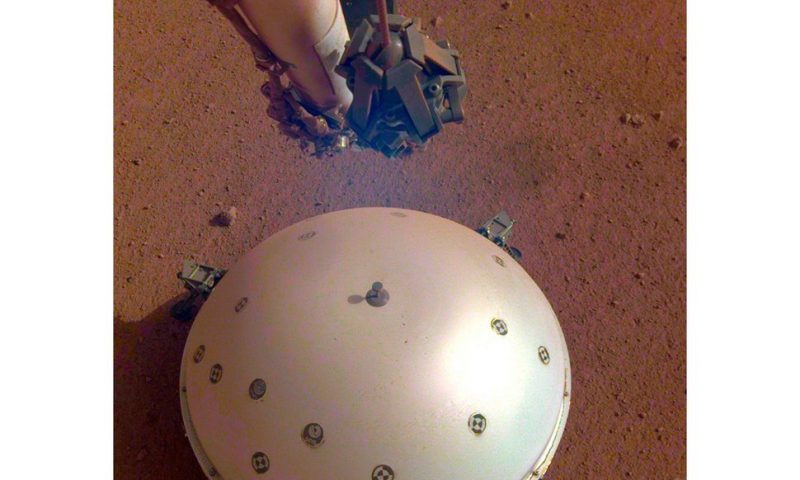The event is a milestone for the InSight mission, though it is too small to tell researchers much about the planet’s origins.
NASA’S INSIGHT MARS lander has reached a major milestone in its mission. It recorded a likely tremor on the Red Planet for the first time, the space agency announced Tuesday.
The lander’s seismometer, which was placed on the planet’s surface to listen to its rumblings on Dec. 19, 2018, detected the “marsquake” on April 6.
“We’ve been waiting months for a signal like this,” said Philippe Lognonné, who is contributing to the mission from the Institut de Physique du Globe de Paris in France. “It’s so exciting to finally have proof that Mars is still seismically active.”
The event was too small for researchers to draw any conclusions about the planet’s interior, which is one of the goals of the InSight mission. By studying what is below the Martian surface, researchers hope to learn more about the formation of other rocky planets like Earth, Mercury and Venus, over 4 billion years ago.
“This is what we what we were all waiting for, the first quivering of the planet picked up by our sensors. We worked hard to develop the most sensitive silicon sensors on Earth to send to Mars as part of SEIS,” said Tom Pike, who is contributing to the mission through the United Kingdom Space Agency. “Up to now we didn’t know if even that was going to be good enough. But it looks like Mars, although very much quieter than Earth, is giving us seismic signals we are able to clearly detect. Our first investigation of the interior of another planet is now under way.”
The seismometer picked up three other much smaller recordings. The team will still study these signals to figure out what caused them.
Unlike Earth, Mars doesn’t have tectonic plates. Its seismic events are believed to be caused by the planet’s slow cooling over time, which can create breaks in the crust, causing a quake. Meteor impacts and movement from underground magma could also cause marsquakes.
While the surface of Mars is extremely quiet, Earth’s surface is moving constantly due to seismic noises caused by oceans and weather. If an event this size happened in Southern California, it would be comparable to the dozens of tiny events that happen there every day that go unnoticed, according to NASA.

